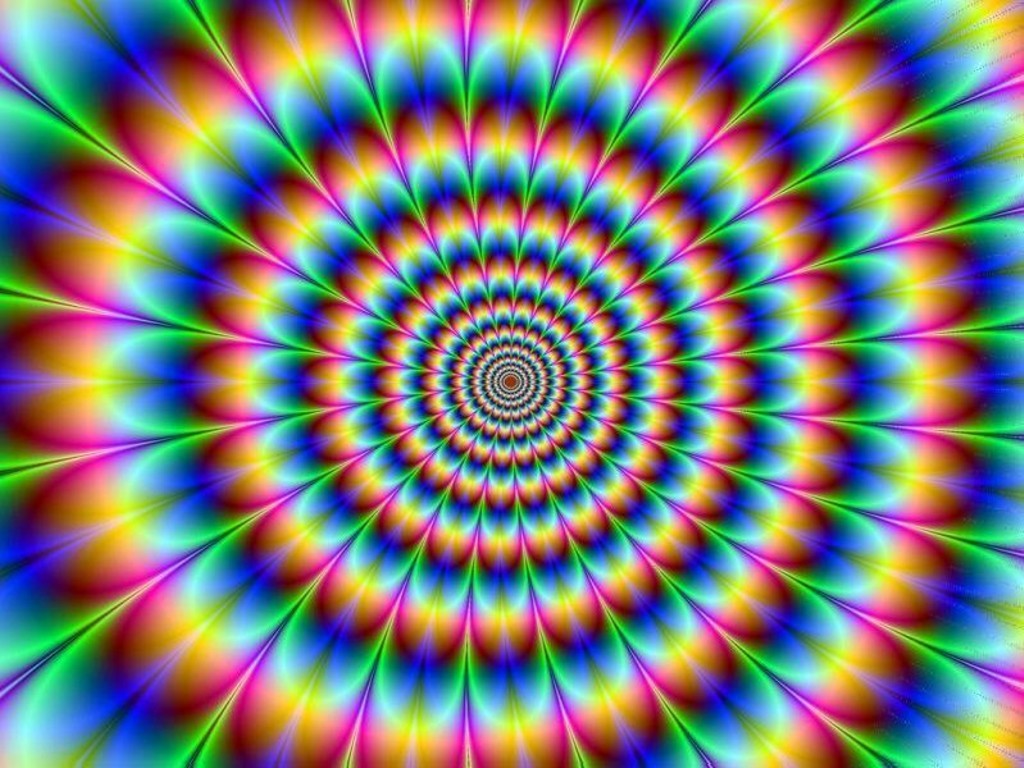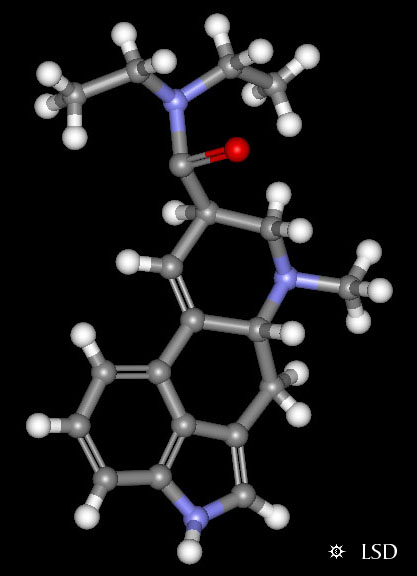Psychedelic LSD: History, Research, and Statistics

Lysergic acid diethylamide, often abbreviated LSD and commonly referred to as “acid,” is a psychedelic drug known for its psychological effects. These include altered thinking processes, visual hallucinations, and spiritual experiences. LSD was well known in the 1960s counterculture, and today it is still used as an entheogen, recreational drug, and recently as subject to research into psychedelic therapy. LSD is non-addictive and is not known to cause brain damage, but negative psychiatric reactions such as anxiety, paranoia, and delusions are possible while under the influence of the drug.
A History of LSD
LSD was first synthesized in November, 1938 by Swiss chemist Albert Hofmann in Switzerland, and its psychedelic properties were discovered 5 years later when Hofmann himself accidentally ingested an unknown quantity of the chemical. LSD was first introduced in 1947 as a psychiatric drug, and at the time it appeared to have great promise in psychological therapy.
According to research, today’s LSD is less potent than it was decades ago.
In the 1950s, officials at the U.S. CIA attempted to use the drug drug for mind control and chemical warfare. The agency's MKULTRA research program administered the drug among young servicemen and students, sometimes without their knowledge or consent. The subsequent recreational use of the drug in the 1960’s youth culture led to a political push for its strict prohibition, which is still in effect in most parts of the world today.
New clinical LSD experiments in humans only began appearing in 2009—the first time in 40 years. Currently, a number of organizations—including the Beckley Foundation, MAPS, Heffter Research Institute and the Albert Hofmann Foundation—exist to fund, encourage, and coordinate research into the medicinal and spiritual uses of LSD and other psychedelic drugs.

LSD in its pure form is colorless, odorless, and tasteless. LSD is often absorbed into blotter paper, a sugar cube, or gelatin and ingested orally. LSD is extremely potent, with 20–30 micrograms (one millionth of a gram) being the threshold dose—an amount roughly equal to one-tenth the mass of a grain of sand.
According to research, today’s LSD is less potent than it was decades ago: in the 60s, black market LSD manufacturer Owsley Stanley distributed acid at a standard concentration of 270 µg. Street samples from the 1970s contained 30 to 300 micrograms. By the 1980s, the amount had reduced to between 100 and 125 micrograms, lowering more in the 1990s to the 20–80 microgram range, and even more in the 2000s.
The Effects of Acid
LSD causes an altered sensory experience of senses, emotions, memories, time, and awareness for 6 to 14 hours, depending on dosage and tolerance.
LSD's psychological effects, often called a "trip," vary greatly from person to person and heavily depend on such factors as previous experiences, state of mind, environment, and dose strength. They also vary from one trip to another, and even as time passes during a single trip.
LSD causes an altered sensory experience of senses, emotions, memories, time, and awareness for 6 to 14 hours, depending on dosage and tolerance. Within thirty to ninety minutes after ingestion, the user may experience anything from subtle changes in visual and auditory perception to overwhelming cognitive shifts. Visual effects include the illusion of movement on static surfaces ("walls breathing"), afterimage-like trails of moving objects, the appearance of moving colored geometric patterns, an intensification of colors and brightness, new textures on objects, blurred vision, and shape suggestibility. Users often report that the inanimate world appears to animate in an unexplainable way.
Some disorienting psychological effects may include a sense that one's thoughts are spiraling into themselves, a loss of a sense of identity or the ego, or a dissolution between themselves and the "outside world." This unitive quality may play a role in the spiritual and religious aspects of LSD. The drug sometimes leads to a restructuring of the user's personality, and creates a mental state that some users report allows them to have more choice regarding the nature of their own personality.

The auditory effects of LSD may include echo-like distortions of sounds and a general intensification of the experience of music. Higher doses often cause intense and fundamental distortions of sensory perception such as synaesthesia, the experience of additional spatial or temporal dimensions, and temporary dissociation.
If the user is in a hostile or otherwise unsettling environment, or is not mentally prepared for the powerful distortions in perception and thought that the drug causes, effects are more likely to be unpleasant than if he or she is in a comfortable environment and has a relaxed, balanced, and open mindset.
The physical reactions to LSD are highly variable and nonspecific, some of which may be secondary to the psychological effects of LSD. Among the other reported symptoms are nausea, hypothermia or hyperthermia, elevated blood sugar, goose bumps, jaw clenching, mucus production, and sleeplessness.
There have been no documented human deaths from an LSD overdose. It is physiologically well tolerated and there is no evidence for long-lasting physiological effects on the brain or other parts of the human body.
Although it is virtually impossible to overdose on LSD, it can impair the ability to make everyday judgments and understand common dangers, thus making the user more susceptible to accidents and injury. LSD may also cause temporary confusion, difficulty with abstract thinking, or signs of impaired memory and attention span. In some people, LSD may trigger panic attacks or feelings of extreme anxiety, and such conditions as schizophrenia or depression can worsen temporarily. No real prolonged effects have been proven, however.

"Flashbacks" are an uncommon psychological phenomenon in which an individual experiences an episode of some of LSD's effects long after the drug has worn off, usually in the days after typical doses. In some rarer cases, flashbacks have lasted longer, but are generally short-lived and mild compared to the actual LSD "trip." Flashbacks can incorporate both positive and negative aspects of LSD trips, and are typically elicited by triggers such as alcohol or cannabis use, stress, caffeine, or sleepiness. Flashbacks are very difficult to study: over 70 percent of LSD users claim never to have "flashed back,” and no definitive explanation is currently available for these experiences.
There may be psychologically beneficial aspects of LSD, although the experience of the drug is different for everyone. Many users claim to have lucid, "out of body" experiences.
Psychedelic Therapy

LSD has been used in psychiatry for its potential therapeutic value in the treatment of alcoholism, pain and cluster headache relief, for spiritual purposes, and to enhance creativity.
The chemical was studied in the 1960s by Eric Kast as an analgesic for serious and chronic pain caused by cancer or other major trauma. Even at low dosages, it was found to be at least as effective as traditional opiates, while being much longer lasting in pain reduction (lasting as long as a week after peak effects had subsided). This was attributed to a decrease in anxiety: patients were not experiencing less pain, but rather were less distressed by the pain they experienced.
From 2008–2011, ongoing research occurred in Switzerland regarding using LSD to alleviate anxiety for terminally ill cancer patients coping with their impending deaths. Preliminary results from the study are promising, and no negative effects have been reported.
There may be psychologically beneficial aspects of LSD, although the experience of the drug is different for everyone. Many users claim to have lucid, "out of body" experiences. LSD also allows users to view their life from an introspective point of view, and some users report using introspection to resolve unresolved or negative feelings towards an individual or incident that occurred in the past.
A 2012 analysis found evidence that a single dose of LSD in conjunction with various alcoholism treatment programs was associated with a decrease in alcohol abuse, lasting for several months. More research in this field is needed before attempting to use LSD for addiction treatment.
Ultimately, the powerful effects of LSD are poorly understood, especially in relation to human emotions, psychology, and consciousness. While LSD may have beneficial uses, it also has potential for intense emotional distress and chaotic psychological effects. LSD may prove to be too unpredictable for clinical or psychological therapy because the experience is so different for every person, every time they do it.

